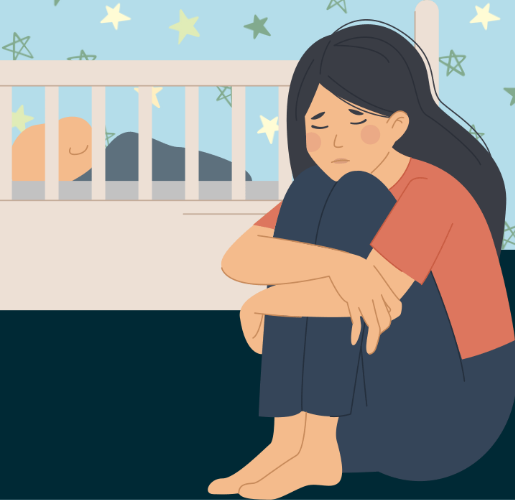Postpartum Hair Loss
Causes, Treatments, and Solutions

Understanding Postpartum Hair Loss
Postpartum hair loss, also known as telogen effluvium, is a common experience for new mothers. During pregnancy, elevated estrogen levels prolong the growth phase of hair, resulting in fuller, thicker hair. However, after childbirth, hormone levels return to normal, causing many hair follicles to enter the shedding phase simultaneously. This sudden hair loss can be distressing, but it is typically temporary.
Most women notice increased hair shedding around three to six months postpartum. The extent of hair loss varies, with some experiencing minimal shedding while others may notice significant thinning, especially around the temples and crown. Although this phase can be alarming, hair typically begins to regrow within a year as the body stabilizes.
Effective Treatments for Postpartum Hair Loss
Several treatments can help accelerate hair regrowth and improve hair health:
1. Nutritional Support
Ensuring proper nutrition is crucial for postpartum recovery and hair regrowth. Deficiencies in iron, biotin, vitamin D, and zinc can exacerbate hair shedding. Supplementing with a high-quality postnatal vitamin, along with a balanced diet rich in lean proteins, leafy greens, and healthy fats, can support healthy hair growth.
2. Topical Treatments
- Minoxidil (Rogaine): While not commonly recommended for breastfeeding mothers, Minoxidil is a well-known FDA-approved treatment for hair loss that stimulates hair regrowth.
- Scalp Serums and Essential Oils: Natural remedies like rosemary oil, castor oil, and peppermint oil have been suggested to promote circulation and hair growth.
3. Low-Level Laser Therapy (LLLT)
LLLT devices, such as laser caps and combs, are designed to stimulate hair follicles and promote regrowth. These treatments increase blood flow to the scalp, encouraging stronger, healthier hair.
4. Platelet-Rich Plasma (PRP) Therapy
PRP therapy involves drawing a small amount of blood, processing it to concentrate the platelets, and injecting it into the scalp. The growth factors in PRP help stimulate dormant hair follicles and promote hair regrowth. Many postpartum women have reported success with this treatment, particularly those experiencing prolonged hair thinning.
5. Hair Growth Supplements
Products like Nutrafol Postpartum and Viviscal contain key ingredients such as marine collagen, saw palmetto, and antioxidants, which support hair regrowth and scalp health. Nutrafol, in particular, is formulated specifically for postpartum women and is breastfeeding-safe.
6. Gentle Hair Care Practices
Avoiding excessive heat styling, harsh chemical treatments, and tight hairstyles can prevent further damage. Using sulfate-free shampoos and conditioners designed for thinning hair can also help maintain scalp health.
Coping with Postpartum Hair Loss
Managing postpartum hair loss is not only about physical treatments but also about emotional well-being. Many women feel self-conscious about hair thinning, but it’s important to remember that this phase is temporary. Styling tricks, such as using volumizing products or trying different hairstyles, can help conceal thinning areas. Consulting a dermatologist or hair specialist can also provide reassurance and personalized solutions.
Postpartum hair loss is a natural response to hormonal changes after childbirth. While it can be concerning, most women experience full regrowth within a year. By maintaining a nutrient-rich diet, exploring hair growth treatments, and practicing gentle hair care, new mothers can support healthy hair regrowth and regain their confidence. For those experiencing prolonged or severe hair loss, seeking professional guidance can provide effective, long-term solutions.
References
Mirmirani, P., & Uno, H. (2011). “Hormonal influences on hair follicle cycling and hair loss in women.” International Journal of Dermatology, 50(12), 1512-1521.
Sinclair, R. D. (2007). “Telogen effluvium and its relationship to pregnancy and postpartum hair loss.” Australasian Journal of Dermatology, 48(2), 86-95.
Hordinsky, M., & Sawaya, M. E. (2018). “Clinical approaches to hair loss and treatment options.” Journal of the American Academy of Dermatology, 79(1), 1-15.
Tosti, A., & Duque-Estrada, B. (2009). “Management of telogen effluvium.” Clinical and Experimental Dermatology, 34(7), 911-916.
Van Zuuren, E. J., Fedorowicz, Z., & Carter, B. (2016). “Interventions for female pattern hair loss.” Cochrane Database of Systematic Reviews, 2016(5), CD007628.


